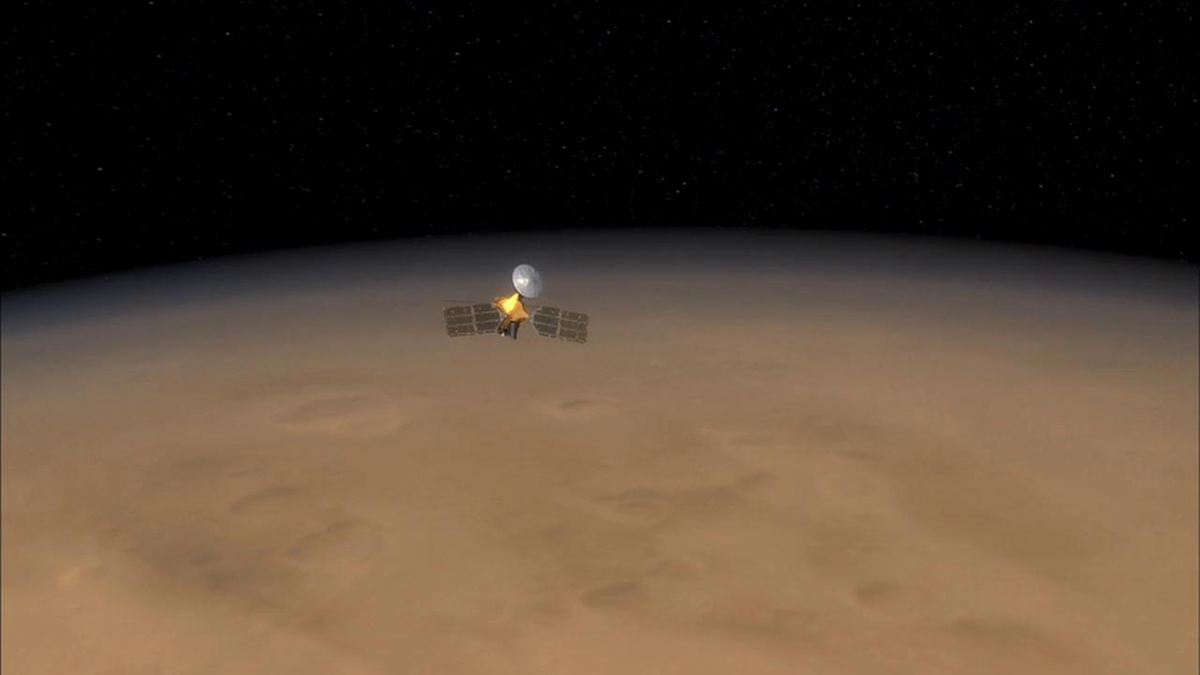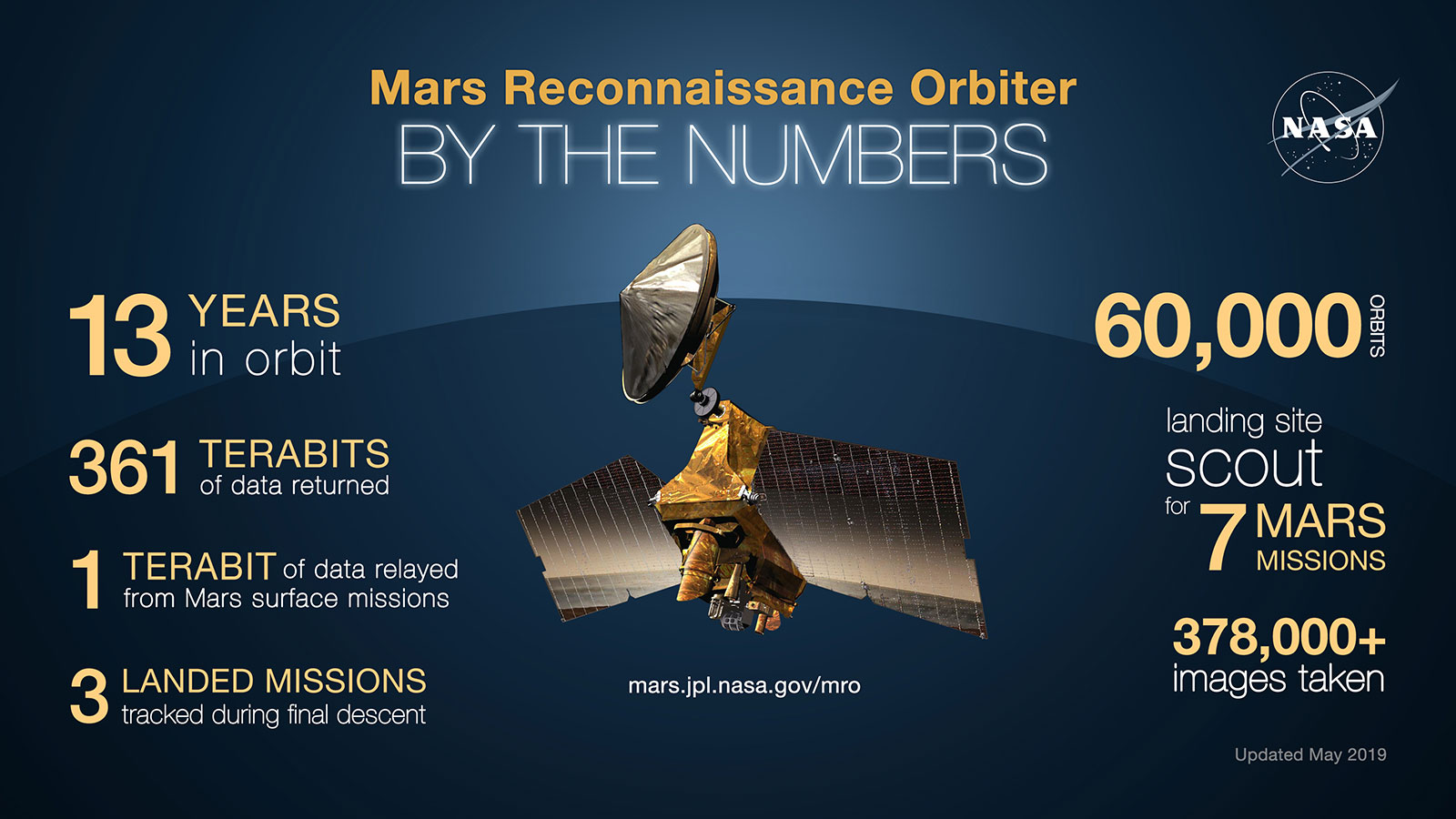NASA's Prolific Mars Orbiter Completes 60,000th Lap of Red Planet

NASA's Mars Reconnaissance Orbiter (MRO) has clocked a total of 60,000 laps around Mars, during which time the probe has collected invaluable data about the planet's surface and atmosphere.
MRO circles Mars once every 112 minutes, traveling at about 2 miles per second (3.4 kilometers per second). On May 15, the probe reached its 60,000-lap milestone at 1:39 p.m. EDT (1839 GMT), according to a statement from NASA.
"MRO has given scientists and the public a new perspective of Mars," Dan Johnston, project manager at NASA's Jet Propulsion Laboratory (JPL) in Pasadena, California, said in the statement. "We've also supported NASA's fleet of Mars surface missions, allowing them to send their images and discoveries back to scientists on Earth."
Related: Latest Photos from NASA's Mars Reconnaissance Orbiter

The MRO mission launched in August 2005 and entered Mars' orbit in March 2006. The probe began its science operations in November 2006, collecting detailed views of the Red Planet's surface and monitoring daily weather patterns using its High Resolution Imaging Science Experiment camera (HiRISE). The data collected by MRO can help preparations for future crewed missions to Mars and identify potential landing sites, NASA officials said in the statement.
MRO also serves as the primary relay for NASA's Curiosity rover. The ground-based spacecraft communicates with the orbiter, which then beams data back to one of NASA's Deep Space Network antennas on Earth. Later this month, MRO will reach another major milestone: relaying 1 terabit of data back to Earth since it arrived at Mars 13 years ago, according to the statement.
"Mars is our laboratory," Leslie Tamppari, MRO deputy project scientist at JPL, said in the statement. "After more than a decade, we've collected enough data to formulate and test hypotheses to see how they change or hold up over time."
Get the Space.com Newsletter
Breaking space news, the latest updates on rocket launches, skywatching events and more!
From its vantage point above Mars, MRO can observe wide swaths of the planet, offering a more comprehensive view of seasonal changes, CO2 ice sublimating, migrating sand dunes, and how meteorite strikes have reshaped the landscape.
Using its Mars Climate Sounder instrument and Mars Color Imager camera, MRO can also study the planet's dynamic atmosphere and monitor massive Martian dust storms like the one that halted operations for NASA's Opportunity rover in 2018.
In addition to MRO, there are several other instruments that orbit Mars and send valuable data back to Earth every day. This includes NASA's longest-lived orbiter, Odyssey, which is the primary relay for the InSight Mars lander, as well as the Mars Atmosphere and Volatile Evolution (MAVEN) orbiter, which will help the Mars 2020 rover land safely on the Red Planet in February 2021, according to the statement.
Editor's note: This story has been corrected to reflect the MRO has beamed home 1 terabit of data, not 1 terabyte.
- Mars 2020: The Red Planet's Next Rover
- The Tricky Task of Aerobraking at Mars
- A Gorgeous 'Blue' Sand Dune Snakes Across Mars in This Awesome NASA Photo
Follow Samantha Mathewson @Sam_Ashley13. Follow us on Twitter @Spacedotcom and on Facebook.
Join our Space Forums to keep talking space on the latest missions, night sky and more! And if you have a news tip, correction or comment, let us know at: community@space.com.

Samantha Mathewson joined Space.com as an intern in the summer of 2016. She received a B.A. in Journalism and Environmental Science at the University of New Haven, in Connecticut. Previously, her work has been published in Nature World News. When not writing or reading about science, Samantha enjoys traveling to new places and taking photos! You can follow her on Twitter @Sam_Ashley13.
